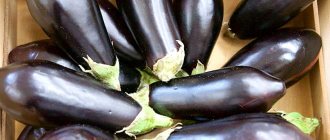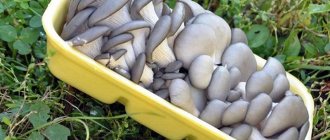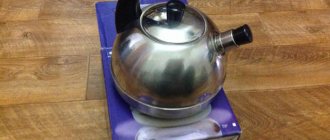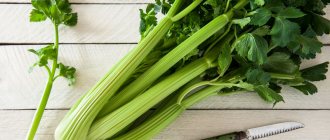You can prepare delicious and original dishes from eggplants, and use them as one of the ingredients in recipes for a wide variety of cuisines. However, in addition to its taste, this vegetable is also valued for its invaluable benefits to the body. Doctors recommend eggplants for dietary nutrition. They have a positive effect on the functioning of the digestive system, remove cholesterol, and bring weight back to normal. And the “little blue ones” are good for bones, skin and hair, the nervous, circulatory, cardiovascular and genitourinary systems.
To clean or not
A novice housewife, having bought the “little blue” ones, wonders whether the eggplants need to be peeled or cooked with the skin on. What if such a procedure deprives the vegetable of most of its beneficial properties? Let's figure it out.
When it is necessary
For dishes with eggplants, in which the consistency should be uniform, the vegetables are always peeled, and, if necessary, the core and seeds are removed (if the fruit is old). The seeds of the old fruit spoil the dish, especially when stewing. Stews, mashed potatoes, caviar and stewed eggplants require a delicate consistency - both separately and together with other vegetables.
When not to clean
In some dishes, the “blue” ones must keep their shape after cooking. It is the skin that helps preserve the appearance of the finished product. Eggplants are also left with the skin and seeds or partially peeled when you want them to add a spicy kick to the taste. Such dishes include baked, fried, stuffed and grilled eggplant and vegetable rolls.
Getting rid of bitterness
When a recipe calls for preserving the skin of a vegetable, but there is a risk that it will taste bitter, eggplants require pre-processing. After washing, they are dried, cut into circles or cubes and soaked in salted water (1 l/2 tbsp) for 25-30 minutes . You can also soak it in fresh milk, under slight pressure, for half an hour. The whole fruit will have to be soaked for at least two hours. Then the eggplant is washed with clean water. Now the vegetable can be cooked, and it will not taste bitter.
By the way ! Did you know that it is not the eggplant peel that is most bitter, but its pulp or seeds? That is why, in order to remove it, the vegetable is cut before soaking.
Is the peel healthy?
Eggplant peel is quite useful. So, it contains a rare substance called nezunin. It is an antioxidant that protects neurons and brain tissue from destruction by free radicals. Along with this, the antioxidant prevents premature aging processes and is involved in the prevention of cancer. Another useful function is ensuring healthy joints and preventing arthritis.
The calorie content of the peel is low - only 24 kcal per 100 g. The product is dietary, and it also contains dietary fiber (100 g contains 13% of the total daily requirement). This is an important nutritional component that should be consumed on a daily basis. The benefits of fiber come down to several points:
- reducing the feeling of hunger;
- promoting weight loss;
- stimulation of peristalsis;
- cleansing the intestines of toxic substances;
- cholesterol reduction;
- blood sugar control;
- prevention of heart attack, stroke and other dangerous pathologies.
The peel is quite useful, so it is better not to remove it
Attention! It is not advisable to peel the eggplants.
It contains most B vitamins, cobalt, copper, manganese, magnesium and other trace elements. Therefore, all useful substances should be preserved.
No harm with the peel
The peel of a high-quality vegetable that is not overloaded with nitrates will not cause harm to the body. Therefore, there is no question as to whether it can be eaten with the skin. On the contrary, the skin contains a maximum of useful substances . However, sometimes you still need to get rid of the skin.
So, the peel is always peeled if the eggplant is not young: older fruits have a tough skin and will have more bitterness. If vegetables are used for dietary purposes or in dishes for children, it is also better to remove the skin. This especially applies to situations when you purchase vegetables grown in large farms and do not know whether nitrates were used and in what quantities. If there is a suspicion that the fruit was grown with the use of chemicals, it is better to get rid of the skin, as it tends to accumulate harmful toxins.
Why peel eggplants?
As you know, this vegetable is not only tasty, but also incredibly beneficial for health, thanks to the content of substances that improve the functioning of the cardiovascular system: zinc, manganese and iron.
Scientists say that in many fruits, most of the beneficial substances are concentrated in the skin and a thin layer of pulp under it. Does this mean that eggplant should be eaten unpeeled? The confusing thing is that the skin may turn out to be hard and bitter, which will negatively affect the taste. We suggest you resolve this issue yourself using our advice.
Eggplant peel contains health benefits
- The skin contains dietary fiber, which is often necessary for our body for the good functioning of the gastrointestinal tract. From a dietary point of view, the peel is healthy and nutritious.
- Overripe, old eggplants must be cleaned. Their skin is thick and rough, it has most likely already lost its beneficial properties, and it is difficult to cook it to the desired softness. Young eggplants do not need to be peeled.
- Most of the bitterness is not concentrated in the peel, but in the pulp. Therefore, experienced housewives soak sliced eggplants in salted water, which they then drain.
- Whether you need to peel the eggplant or not also depends on the dish you want to prepare. For example, if you need to fry or grill slices, the peel will help maintain the shape of the eggplant and prevent it from falling apart. Finely chopped cubes for stews or breaded frying will not fall apart without the skin.
And finally. If you grow eggplants in your own garden and do not use pesticides, nitrates or substances that accelerate fruit growth, then cleaning is not necessary. But it’s better to clean store-bought eggplants, or those bought at the market: how do you know in what conditions they were grown?
How to peel eggplants
If a recipe requires peeling or you prefer a peeled vegetable yourself, there are several ways to do it. There are three types of cleaning:
- Full.
- Partial.
- After preparing the dish.
Before cooking, the vegetable is washed well under running water, the base of the stem and the lower part are always removed - they are hard and bitter. They are cut off regardless of the cleaning method and the age of the fruit.
Full
To do this, remove the skin with a knife or vegetable peeler. The peel layer should not be too thick. Place the eggplant on the board vertically with a slight slope. Peel the peel in strips from top to bottom until the entire vegetable has been peeled.
Partial
This type of cleaning diversifies the look and taste of finished dishes. It allows you to preserve the benefits of the vegetable and keep its shape. The meaning of this method is that the peel is cut off in the same way as in the previous case, only not completely, but in strips 2-3 cm wide. It turns out to be a sort of eggplant “zebra”.
After preparing the dish
The finished vegetable is cleaned after heat treatment. From a baked or scalded whole fruit, when it has cooled, carefully remove a thin layer of skin with a knife, hands, fork or spoon.
Adviсe
Housewives are constantly improving their skills and sharing their discoveries with each other. Tricks for cleaning the “little blue”:
- The area near the “stem” is usually hard and bitter, so it is cut off even if you do not plan to peel the whole fruit. Do the same with the lower tip.
- The skin can be removed from the finished vegetable (while warm), if necessary for aesthetic serving. But, in this case, the dish may be slightly bitter.
- If you use your imagination, you can get a “striped” eggplant - by peeling not all the skin, but only strips. This approach will help to interest children in its unusual appearance.
To make it tasty and healthy
If you are wondering whether it is necessary to peel an eggplant, you should know that it is bitter not only and not so much because of the peel. The seeds give the vegetable its bitterness. The pulp itself can be bitter. Solanine contained in fruits is responsible for this - a substance that in large quantities has a harmful effect on the body. And when frying a vegetable, it not only spoils the taste of the dish, but can also cause intoxication. Experienced housewives and cooks can always determine whether the fruits will taste bitter.
To understand whether there is a lot of solanine in eggplant and, accordingly, whether it needs pre-treatment, just cut off a small piece of the vegetable and wait half a minute. Eggplant flesh that contains no or very little solanine will remain light in color or may acquire a slightly yellow tint. Vegetables containing a harmful substance darken and turn brown when cut.
To completely remove bitterness, and therefore get rid of solanine, you need to properly process the “little blue” ones:
- cut the eggplant as required by the recipe (you can process the whole eggplant if necessary);
- soak in salted water or milk (30 minutes for cut fruits, two hours for whole ones);
- Remove seeds and peel from the fruit (in whole or in part).
By the way ! Nowadays, most varieties of eggplant are no longer bitter. All thanks to the breeders: they tried hard and developed varieties that simply are not bitter.
Video about peeling eggplants
Now you know how to properly peel eggplant for various dishes. We hope our tips helped you. Share your thoughts on this topic with us and our readers in the comments. Bon appetit and comfort to your home!
- Author: Svetlana Grishkina
Good afternoon My name is Svetlana. This site has become for me not only an additional source of income, but also an opportunity to share with you my knowledge in housekeeping. Rate this article: (27 votes, average: 3.5 out of 5)
Is it always necessary to peel the fruit completely?
Whether to peel eggplants or not is a question that everyone answers for themselves.
If the dish is to be savory, the peel can be left on. And when the food must be tender, it is better to cut off the skin and remove the seeds. Sometimes, eggplants are not peeled whole, but in longitudinal strips. In this case, the bitterness is significantly reduced, but the slices continue to retain their shape well during heat treatment.
Young fruits are not deseeded because they are soft and tasty. But, such eggplants can be peeled if necessary for a culinary project. It is important to remember that the thin skin does not have a pronounced bitter taste, and it is permissible to leave it.
Method 2 - in salt water
You can soak eggplants in salt whole or in pieces. To prepare a saline solution, use 1 liter of cold drinking water and 1 tablespoon of salt.
It takes at least two hours for the bitterness to leave the whole fruit. It goes away from the pieces in about 30 minutes.
How to do this correctly?
- Wash eggplants well before cooking.
- Each is cut into round or longitudinal slices, cubes or in another way specified in the recipe.
- Place in a bowl of salted water.
- Press down from above with pressure so that they do not float up.
- Then rinse with fresh water and place on a towel to remove excess moisture.
We recommend: Why you shouldn’t pour water out from under pasta - analysis of life hacks from the Internet
Proven ways to get rid of bitterness in eggplants
There are several proven ways to remove bitterness from eggplants. You can do this by salting, soaking nightshades, freezing them, soaking them in milk, or peeling them. The method must be chosen individually, depending on what dish you want to prepare. For example, peeling involves completely removing the skin, while some recipes require it. Below you will learn some simple methods for removing bitterness that are sure to make eggplant dishes even more delicious.
Salt treatment
There are two main ways to remove bitterness from blues. Both of them involve the use of ordinary iodized salt, which is found in every housewife. The first is called “dry”, since during its implementation there is no soaking. You can season eggplants cut into slices, circles, and cubes with salt. How to properly carry out salt treatment without water:
- Prepare the food: wash the eggplants well, wipe with a napkin, cut, remove the tails. Take coarse salt. Large granules are necessary due to the porosity of the blue skin: if the salt is too fine, the skin will absorb it, and the future dish may become over-salted because of this.
- Take a deep bowl and place chopped or whole vegetables in it. Cover them with salt. It will take about twenty minutes for the eggplants - then drops of liquid will appear on their surface.
- After the required time has passed, wash the eggplants, dry them and use them for further cooking.
Soaking in water
The “wet” method of salt processing of eggplants is also extremely popular. It's great if you don't want to cut the blues before processing, but want to remove the bitterness while they're still whole. To carry out this procedure, you will need pressure that will not allow the nightshades to float. How to properly soak fresh bitter eggplants in salt water:
- Fill a pan with clean, cold, salted water. One tablespoon of salt is enough for a liter of water. Cut the eggplants into circles, cubes or slices, or you can leave them whole.
- Place the vegetables in the pan. The blue ones will not completely sink in the water, so you will need to install a pressure on top: this can be a wooden round board the size of the pan, with a stone on top.
- Keep the eggplants in salted water for about thirty minutes. If you put in whole vegetables, the de-bittering procedure will take several hours.
- Rinse the vegetables after the required time, squeeze them lightly. You can use nightshades for cooking.
The easiest way to peel blue ones
If you don't want to spend a lot of time handling the eggplants, or the recipe calls for peeled vegetables, you can get rid of the bitterness by peeling the blue ones. To do this, you will need a special vegetable peeler or a sharp knife. By removing the peel, you will remove the source of bitterness - the solanine it contains. How to peel blue ones:
- Wash the eggplants thoroughly and wipe with a dry towel to remove moisture.
- Using a vegetable peeler or knife, carefully remove a thin layer of skin.
- Chop or grate vegetables depending on the recipe for later cooking.
Another alternative way to make blues less bitter is to leave them in the freezer for a few hours. To do this, rinse the product, dry it, and cut it into slices. Place them on a plate and leave to freeze for four hours. When the required amount of time has passed, remove the blue ones and squeeze out the excess liquid. They are perfect for making eggplant puree or caviar, because they quickly lose their shape when cooked.
Incomplete cleaning
There is another interesting method in which the peel is partially removed from eggplants, that is, in strips. The method is interesting because the vegetables retain their shape during heat treatment, and the finished eggplants take on an unusual and attractive appearance. You must first wash the eggplants, cut off the stem and peel them in strips of equal width (about 2-3 cm, depending on the size of the vegetables). If the baked eggplant is very soft, you can remove the skin simply with your fingers or a spoon.
- Author: Maria Sukhorukikh
Rate this article:
- 5
- 4
- 3
- 2
- 1
(0 votes, average: 0 out of 5)
Share with your friends!
Disease and pest control
To prevent the development of diseases or the harmful effects of pests, seedlings must be periodically inspected. If there are insects or deformation of plants, you should immediately take appropriate measures. So, in the fight against pests, experienced gardeners advise using folk remedies. The most effective method is to sprinkle the ground with wood ash, and it is recommended to spray the plants themselves with soapy water. If diseases occur, you can use decoctions or infusions of herbs, together with fungicidal or insecticidal agents.
If the above remedies do not cope with the problems that have arisen, it is recommended to use chemicals.
Boiling water
If the eggplants are grown on your own plot and their quality is high, it is not at all necessary to process them before cooking; you just need to wash and cut them.
But, if the vegetables are bought in a store, there is a chance that during the cooking process a bitter taste will begin to appear.
It forms in the skin and pulp when the eggplant is transported or sits on the shelf for a long time.
Photo: Pixabay
First method: salt treatment
Each housewife uses her own method, repeatedly tested and loved. In this article we will talk about the most famous methods of how to get rid of bitterness from eggplants. So, the first method is salt treatment. We take the vegetables prepared for processing, wash them well, and cut off the tails. Depending on the type of dish, cut the vegetable into slices or circles.
Place in a bowl (preferably deep), rub with coarse salt and leave them alone for 20 minutes. If you need whole “little blue ones,” then the marinating time can reach an hour. As the salt dissolves, droplets of liquid will begin to appear on the eggplants. After the specified time, all that remains is to rinse our vegetables well under cold running water and use them for their intended purpose. The first option on how to remove bitterness from eggplants has been mastered. It's the simplest. By the way, you can not rinse the vegetables with water, but simply squeeze them out.











